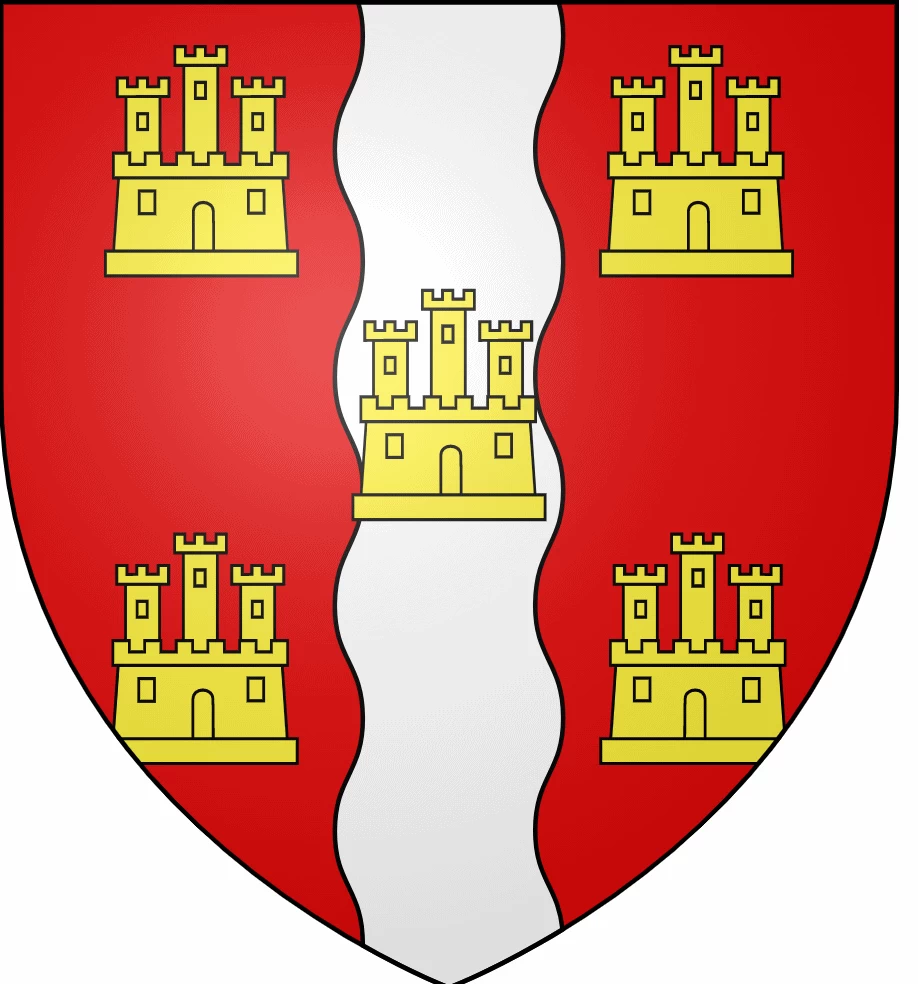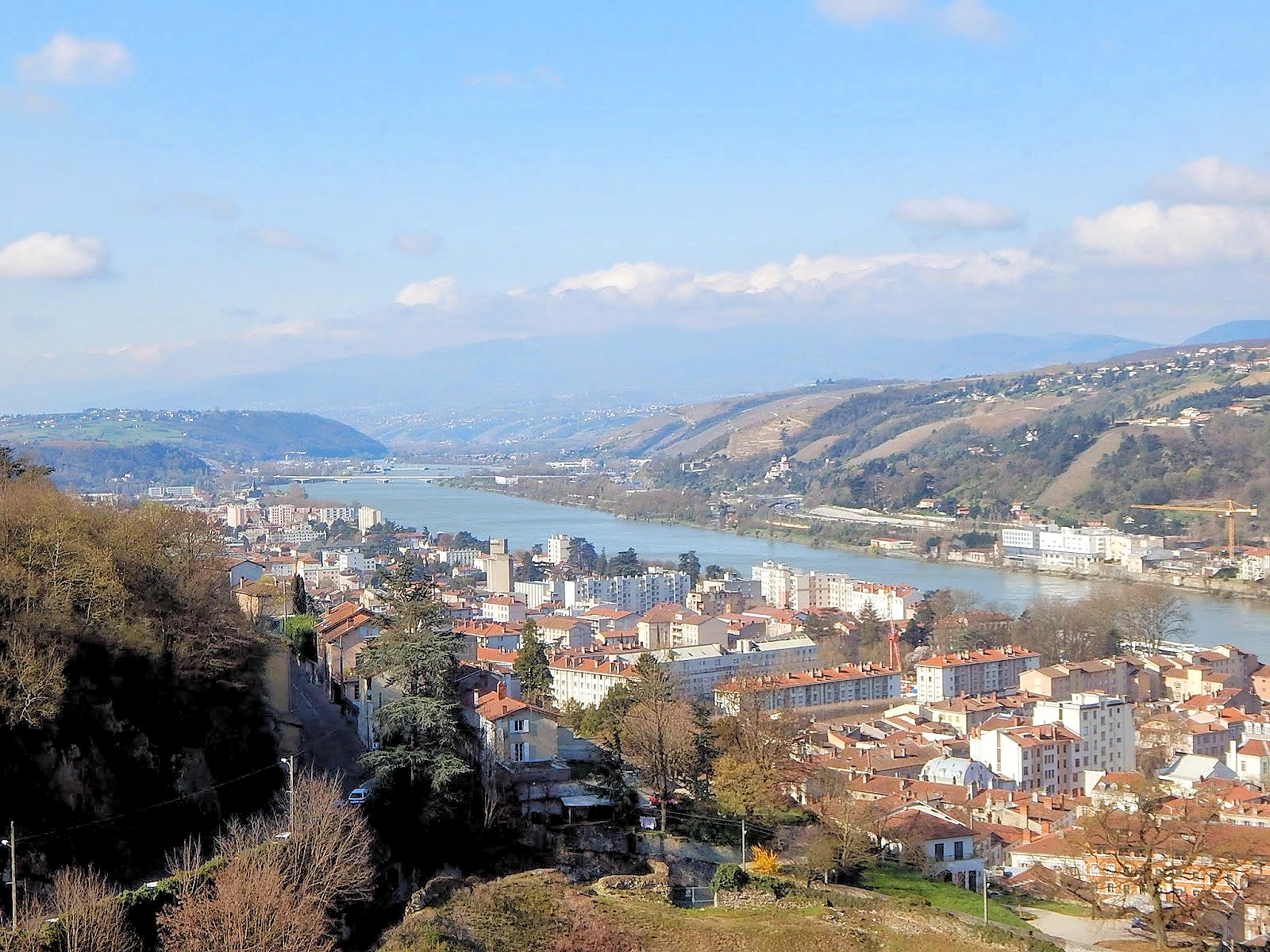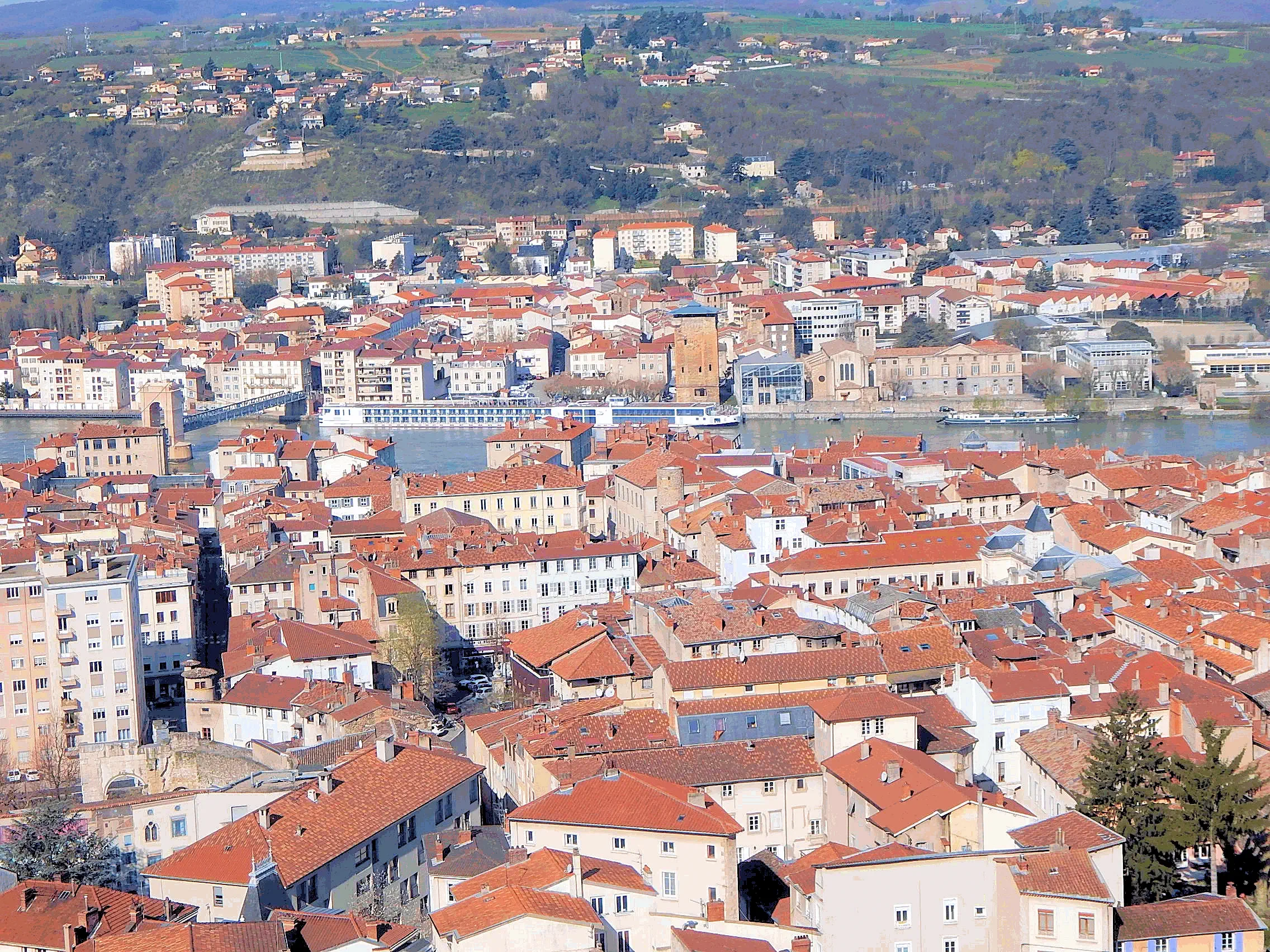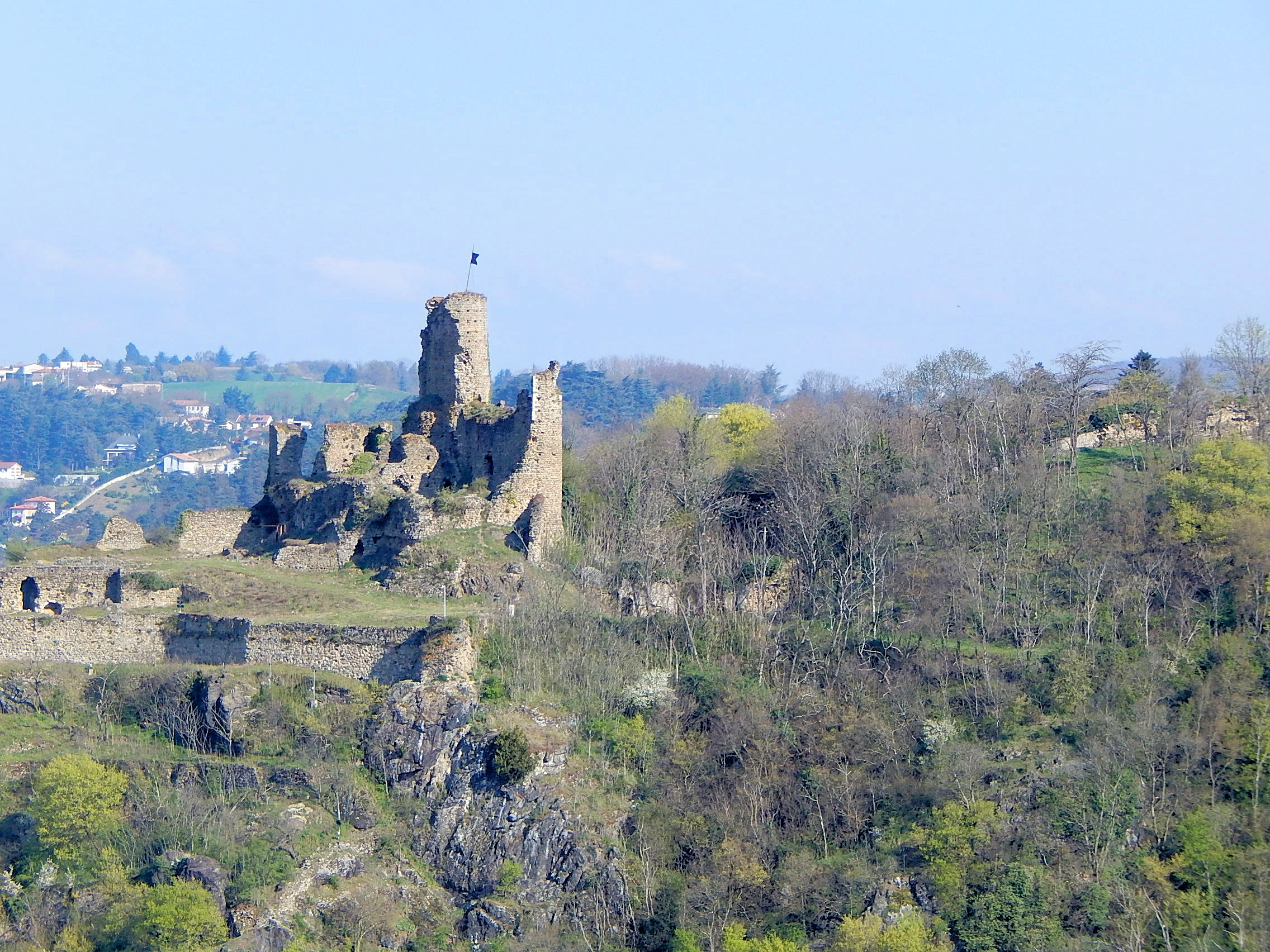by Celeste Lipford and Terry Lipford - last updated on 9/29/2025

Vienne is a commune in southeastern France, located 35 kilometres (22 mi) south of Lyon, on the river Rhône. It is only the fourth largest city in the Isère department, of which it is a subprefecture, but was a major center of the Roman Empire. The stop here was day # 5 on our River Rhône cruise (click here to view our Trip Overview Page), and it was very chilly made even chillier due to the early arrival of the ship at it's dock. It is also Easter Sunday, so we weren\'t certain what would be open in the village.

Vienne is a regional commercial and industrial center specializing in the food industry. Tourism is also a major part of the town's economy. Indeed, there are many important historical monuments that draw the crowds, but the annual Jazz à Vienne festival in July also makes it a popular tourist destination.
Vienne, nestled along the Rhône River in southeastern France, boasts a history as rich and layered as the local tapestry. Its story stretches back a staggering 2,500 years, intertwined with empires, wars, and cultural shifts that shaped the face of Europe.
Vienne's first act began with the Allobroges, a powerful Celtic tribe who established a settlement here around 200 BC. This strategic location, where the Rhône and Gère rivers meet, attracted the attention of the Romans, who conquered the region in 121 BC. Vienne quickly ascended as the capital of "Gallia Narbonensis," a crucial hub for trade and administration.
Roman rule left an indelible mark, evident in the monumental structures still standing today. The Théâtre Antique, capable of seating 13,000 spectators, echoes with the ghosts of ancient plays. The Temple de Cybèle, later transformed into a Christian church, whispers tales of religious evolution. These remnants testify to Vienne's prosperity and cultural vibrancy under Roman rule.
Christianity found fertile ground in Vienne, becoming one of France's first bishoprics by the 2nd century AD. The Council of Vienne, convened in 1312 by Pope Clement V, condemned the Knights Templar, forever tying the city's history to a pivotal moment in religious and political power struggles.
As the Roman Empire waned, Vienne faced centuries of turbulence. Barbarians, Franks, and Burgundians vied for control, leaving their own mark on the city's architectural and cultural tapestry. Despite this, Vienne remained a significant religious center, with its archbishop wielding considerable influence.
The Middle Ages saw Vienne flourish as a commercial and artistic hub. Merchants thrived, guilds were established, and the Romanesque style left its mark on churches and abbeys. The city even briefly served as the capital of the Kingdom of Burgundy in the 11th century.
However, religious wars and economic decline took their toll, leading to a period of relative obscurity. It wasn't until the 19th century that Vienne experienced a revival, fueled by the silk industry and its strategic location on the Lyon-Marseille railway line.
Today, Vienne stands as a living museum, its ancient past whispering in the cobbled streets and majestic monuments. Visitors can step through time, from the grandeur of Roman theaters to the quiet contemplation of medieval churches. Vienne's history, with its triumphs and tribulations, serves as a powerful reminder of the city's enduring spirit and its position as a crossroads of civilizations for centuries.
Vienne is a picturesque town that straddles the River Rhône, with the majority of its charming streets and historic sites located on the eastern bank. These photos capture moments from our crossing of the La Passerelle pedestrian bridge, which conveniently connects the western side—where our ship was docked—to the heart of the town on the eastern side. Our stroll across the bridge led us straight to the magnificent Saint-Maurice Cathedral, an iconic landmark that dominates the town's skyline with its Gothic grandeur.
Vienne's rich Roman heritage is unmistakable as you wander its stone-paved streets, where history seems to echo around every corner. The Temple of Augustus and Livia, a remarkably well-preserved Roman temple, showcases the architectural brilliance of the ancient world. This historic treasure, along with the town’s amphitheater and other remnants of Roman influence, highlights Vienne as a destination where past and present beautifully coexist.
This is a medieval Roman Catholic church in the city of Vienne, France. Dedicated to Saint Maurice, it was the episcopal see of the primate of the ancient Septem Provinciae and of the Archdiocese of Vienne until its abolition confirmed by the Concordat of 1801.
The cathedral's façade is adorned with intricate sculptures and decorative elements, while its soaring nave features stunning stained glass windows that illuminate the interior with a kaleidoscope of colors. The exquisite 16th-century choir stalls, meticulously carved with biblical scenes and intricate detailing, are a testament to the craftsmanship of the era.
The cathedral's history is closely intertwined with the town's rich past, and it has played a significant role in both religious and secular events. The annual "Jazz à Vienne" festival often hosts concerts within the cathedral's hallowed walls, creating a harmonious union of music and history.
All other images (unless otherwise noted) are the property of Just Traveling Thru, LLC.
As we continued our Vienne exploration, we discovered this amazing building. It was built near the end of the first century and was originally dedicated to Emperor Augustus, then rededicated to his wife Livia in AD 41 by her grandson Claudius, the Roman emperor. The columns are scarred by remains of wall fastenings when the temple was used in prior centuries as a storehouse and museum. Yet, the main reason for the great state of preservation of the structure is that it was incorporated into a church perhaps as early as the fifth century and restored in the nineteenth century.
The temple, which once served as a place of worship, is characterized by its classical Roman design, featuring impressive Corinthian columns and intricate decorative reliefs on its friezes and pediments. These detailed carvings depict mythological scenes and symbolic motifs, offering insights into the religious beliefs of the time.
Remarkably, the Temple of Augustus and Livia has endured over two millennia, and its structure and artistic detailing are a striking reminder of the enduring impact of Roman civilization on the town of Vienne. Visitors to this historic site can explore the temple's awe-inspiring architecture, soak in its historical significance, and gain a deeper appreciation for the rich Roman heritage that still echoes through the charming streets of Vienne.
All other images (unless otherwise noted) are the property of Just Traveling Thru, LLC.
Also known as "la Chapelle du Mont Pipet", it is located on top of Mont Pipet above the town of Vienne, France - la Chapelle du Mont Pipet, 1873, by local architect Abel Jouffray. Built over Roman ruins. Dedicated to Notre-Dame-de-la-Salette and also known as the Chapel of the Virgin Mary (a statue of Mary overlooks the town from a brick pedestal).
The chapel itself is a masterpiece of neo-Gothic architecture, with its intricate stonework, pointed arches, and graceful spires. It sits atop a hill, offering panoramic views of Vienne and the surrounding landscape.
The interior of the chapel is equally captivating, with beautiful stained glass windows, religious frescoes, and a serene atmosphere conducive to prayer and reflection. Pilgrims and visitors alike come to the Chapelle Notre Dame de la Salette to pay their respects and experience a sense of tranquility and spiritual connection.
As we hiked up Rue Pipet to arrive at the Roman Amphitheater, we walked by this Chapel and Statue of the Virgin Mary. You have to make a sharp right turn to enter the road to the amphitheater, so you will walk right by this chapel. This area is also known as the Belvédère de Pipet, which was originally a fortress, long since destroyed.
All the above images (unless otherwise noted) are the property of Just Traveling Thru, LLC.
Originally constructed during the Roman occupation era, it is an 8,000 seat Roman Amphitheatre on Mont Pipet overlooking Vienne. It has a modern outdoor stage but the seating is the ancient stone benches!
The theater's design is a stunning blend of practicality and artistic finesse, with the capacity to hold approximately 13,000 spectators. The semi-circular arrangement of seats provides a panoramic view of the stage, which was used for performances, including plays, music, and athletic competitions during the Roman period.
The theater's ornate facade is adorned with decorative elements, and the stage area features intricate carvings and statues, providing a glimpse into the opulent tastes of the time.
This theater continues as an entertainment facility today, click here to visit their website.
NOTE: This image is the property of Sebleouf via Wikimedia Commons using using the CC BY-SA 4.0 license.
 Looking South from the Roman Amphitheater
Looking South from the Roman Amphitheater
The Roman Theater sits on a hill high above Vienne, which provided us with a great view of the village and the River below.
 Looking West from the Roman Amphitheater
Looking West from the Roman Amphitheater
In the upper center of this picture, you can see the Viking Heimdal docked on the western side of the river.
 Looking North from the Roman Amphitheater
Looking North from the Roman Amphitheater
Ruins of the medieval fortified castle of la Batie. It was built in the 13th century by Archbishop Jean de Bernin. The building was listed as a historic monument in 1926 and is the only element remaining of the town's medieval fortifications.
All the above images (unless otherwise noted) are the property of Just Traveling Thru, LLC.
Located on Boulevard Fernand-Point, this impressive monument is a surviving remnant of the grandeur of Vienne’s Roman Circus, modeled after the iconic structures of Rome's Circus Maximus. It serves as a vivid reminder of the city’s significance during the Roman Empire, blending ancient history with the modern urban landscape.
Constructed during the 1st century AD, the Cirque Romain de Vienne was a magnificent venue, built to host some of the most thrilling entertainment of the era. From exhilarating chariot races to gladiatorial combats and elaborate spectacles, it was a hub of social and cultural activity. With a seating capacity that could accommodate up to 20,000 spectators, this circus was among the largest and most elaborate in the Roman world.
Today, though only fragments of the original structure remain, the monument offers a fascinating glimpse into Roman engineering and the vibrant civic life of ancient Vienne. Visitors can imagine the roar of the crowds and the pulse-pounding excitement that once filled this historic arena.
To get to Vienne you would most likely fly into a major French airport like Paris Charles de Gaulle (CDG) or Lyon–Saint-Exupéry (LYS) and then take a train. From Lyon, you can catch a train to Vienne, which takes about 30 minutes. Alternatively, if coming from Paris, you can take the high-speed TGV train to the Lyon Part-Dieu station, then transfer to a regional train to Vienne.
The Roman Theater, Notre Dame de Pipet Chapel and the Jardin de Cybèle.
A minimum of 1.5 hours for a tour of Vienne itself, plus an extra hour for the Pipet hill vantage point.
Vienne is a commercial center for the food industry and boasts a large open-air food market on Saturdays. It is known for dishes like "cervelle de canut".
While the modern parts of Vienne, France, are generally more accessible, the historic city center presents accessibility challenges for wheelchair users. The ancient Roman sites, in particular, have varied accessibility. The Notre-Dame de Pipet chapel in Vienne, is not wheelchair accessible, as the chapel's location can be physically demanding due to steep paths and limited accessibility for those with mobility issues.
Vienne's strategic location on the Rhône made it a major urban center in Roman Gaul. It was a Roman colony under Julius Caesar and later a provincial capital, with impressive infrastructure and architecture.
Yes, Vienne is highly walkable, especially its compact, flat historic city center where most major historical sites like the Roman Theatre, the Temple of Augustus and Livia, and the Saint-Maurice Cathedral are located. While some attractions, like Pipet Belvedere or the Gallo-Roman museum across the river, involve climbs or require crossing the Rhône, the city's core remains easily navigable on foot for exploring its Roman heritage and riverside charm.
The following list contains links to all of our other French Destinations & Information Pages, click any link to go to that page.
Note: All images featured on this page are the exclusive property of Just Traveling Thru, LLC, unless otherwise stated. When images from external sources are used, full credit is given to the original creator, along with a link to the specified license or usage terms. We are committed to respecting copyright and intellectual property rights, ensuring that all third-party images are properly attributed. If you have any questions regarding image ownership or usage rights, please feel free to contact us.
Affiliate Links: We may earn a commission if you make a purchase through one of our affiliate links. This helps support our travel content — thank you!
Content: To review any of our content, make suggestions and/or comments, please click the "About" menu link at the top of this page. You will find our "Contact Us" link on that drop-down menu.